METAPHORICAL AND METONYMICAL TRANSFERENCE IN PHRASEOLOGICAL MEANING FORMATION (BASED ON ENGLISH SET PHRASES WITH NAMES OF PROFESSIONS)
METAPHORICAL AND METONYMICAL TRANSFERENCE IN PHRASEOLOGICAL MEANING FORMATION (BASED ON ENGLISH SET PHRASES WITH NAMES OF PROFESSIONS)
Abstract
The article attempts to describe the formation of phraseological meaning, considering cognitive aspects of human speech activity. It aims at identifying the role of metaphorical and metonymical transference in phraseologization process. The object of the study is English phraseological units, with words denoting professions. The principle of conceptual compositionality allows us to determine the contribution of each component in the phraseological unit to its meaning. If the semantic shift involves a lexeme that is not the name of a profession, the resultant set expression specifies characteristics of a representative of this profession. And if metaphorical or metonymical transference affects the name of a profession, the resultant phraseological unit denotes a completely new object that associatively has some common properties with a person engaged in this type of activity. Taking into account the productivity of the research carried out at the junction of general phraseology and cognitive linguistics, it can be regarded quite justified to distinguish such a sphere of language study as cognitive phraseology.
1. Introduction
Phraseology, which appeared in the first half of the twentieth century, has undoubtedly formed as a linguistic discipline. In our country, it is possible to single out several areas of studying the phraseological system of the English language. A significant part of the research is devoted to the semantics of phraseological units or to their linguocultural aspects , . A number of studies compare phraseological units of different languages and consider the peculiarities of their translation , . The study of phraseological units within the framework of the cognitive-communicative paradigm of knowledge is also being developed ,
, .Describing the phraseological stock of a language, scientists use various criteria for dividing set expressions into classes: their structural and semantic characteristics , their nominative qualities and so on. The process of generating phraseological units is of particular interest. In this respect, the relevance of our research is determined by the necessity to study cognitive mechanisms of phraseological meaning formation. The importance of metaphorical and metonymical transference here cannot be overestimated. The purpose of the research is to reveal the role of metaphor and metonymy in forming phraseological semantics. It involves partial or complete change of meaning of the words that are components of phraseological units. The novelty of the work is determined by an attempt to view such an important aspect of English phraseology as the process of forming phraseological units from the perspective of cognitive linguistics.
2. Research methods and principles
The object of the work is more than 100 English set expressions comprising words denoting a person’s professional activity. The choice of phraseological units with such lexemes is not accidental. It is explained by the anthropocentric nature of man’s understanding of the surrounding world: professional activity is one of the most important factors that determine people’s lifestyle.
The research material is common-language and phraseological dictionaries , , , . We used methods of continuous sampling and analysis of dictionary definitions, structural-semantic and conceptual analyses.
It is a well-known fact that phraseological units are complex signs that consist of several components. We cannot but agree with the opinion of E. S. Kubryakova, who claims that when analyzing each complex unit, it is necessary to identify how exactly the meanings of its components interact and what types of interaction are observed in different complex signs .
Cognitive linguistics pays special attention to the emergence of new knowledge structures on the basis of already existing concepts. It has been found out that the main principles of this process are conceptual compositionality and conceptual integration . Conceptual compositionality involves creating a new concept from the elements and meanings of initial concepts by means of their interaction, arrangement and merging. And the specific features of conceptual integration are not only the arrangement of initial concepts, but also their further development. The notions of conceptual compositionality and conceptual integration help to clarify the problem of signs interaction in complex language constructions of different types, including phraseological units , .
3. Main results
We considered nominative phraseological units that perform the function of naming, i.e., designating objects, phenomena, actions, qualities, etc. The most common structures are:
Adj N (20% of all studied set expressions): an honest broker, a wet nurse, the merry dancers, etc.;
N N (15%): a fortune hunter, a rocket scientist, a business doctor, etc.;
N prep N (12%): the arbiter of elegance, a fisher of men, a writer to the signet, etc.;
N’s N (10%): God’s advocate, tailor’s dummy, busman’s holiday, etc.
Adjectival (mad as a hatter), verbal (to be one’s own trumpeter) and adverbial (in the driver’s seat) set phrases are extremely rare. Proverbs and sayings are beyond the scope of this work.
The study revealed that metaphorical or / and metonymical transference can affect different parts of a language unit in the process of phraseologization. Let us consider the mechanisms of forming phraseological semantics.
1) In most cases (53 phraseological units), any other word is subject to semantic shift, except for the lexeme that denotes a person’s profession.
With a slight advantage, the process of phraseologization in this subgroup occurs according to the metonymic model. An example is a set phrase workers by hand and brain – people employed in physical and mental labour. Metonymy “part of the body” → “type of work” is involved in forming the meaning of this expression twice. Firstly, it helps the word hand to develop a new meaning: “the part of a person’s arm beyond the wrist that is used for holding, moving, touching things” → “physical labour” (here and further on definitions are taken from electronic dictionaries , ). Secondly, the metonymical transference affects the word brain and associates “the organ of the body inside the head that controls thought, memory and feeling” with “mental labour”. Interacting conceptual features are distinguished in the meanings of the words that constitute the phrase (see Fig. 1).
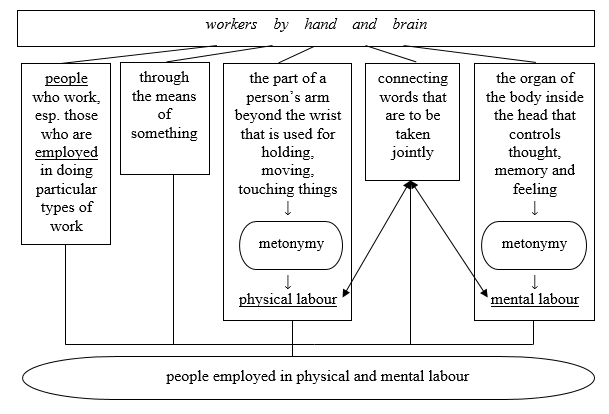
Figure 1 - Formation of the phraseologism workers by hand and brain
Somewhat less common are cases of metaphorical semantic shift associated with words that do not denote a profession, such as in the expression a ghost writer – a person who writes a book or other published work for another person. It illustrates transference based on similarity: “invisible in the physical world” → “invisible, unnoticed by the reading public” (see Fig. 2).
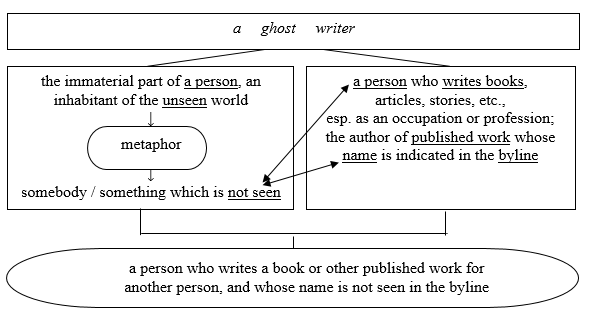
Figure 2 - Formation of the phraseological unit a ghost writer
2) The study revealed that less than half of phraseological units (45 set expressions) are formed by means of a semantic change within the component that denotes a profession.
In this subgroup, not metonymical, but metaphorical transference prevails. Consider the meaning of the set phrase a silent butler – a receptacle with a handle and a hinged lid for collecting table crumbs and the contents of ashtrays. It is formed with the help of the metaphor: “a person in charge of the table” → “an object intended for serving people at the table” (see Fig. 3).
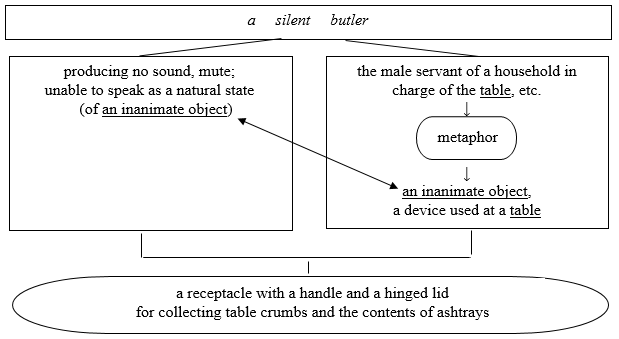
Figure 3 - Formation of the phraseological unit a silent butler
Somewhat less frequent are the cases when metonymy occurs in the word denoting a profession. One of the numerous metonymical models is based on associating objects that are involved in the same situation
. This is what happens in the expression a good sailor – a person who is not sick on a boat or ship. Both “a seaman, a person whose profession is related to sailing on a ship” and “any person who sails on a ship” are in the same setting – on board a ship (see Fig. 4).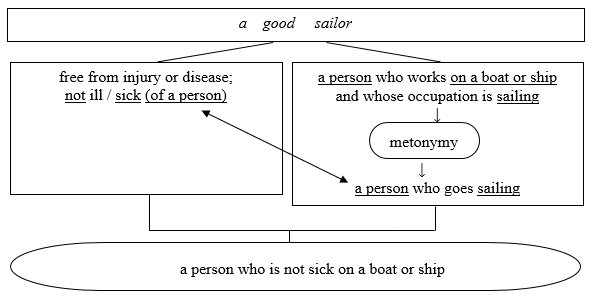
Figure 4 - Forming the semantics of the set phrase a good sailor
It is also interesting to mention the origin of the expression a shepherd’s pie – a potato pie with meat. Originally, pies with mashed potatoes and any kind of meat were called “cottage pies”, because they were typically made by people who lived in cottages in the country. Nowadays, such a lamb pie is called “a shepherd’s pie”, which has become possible due to the metonymy “lamb meat” → “a shepherd looking after lambs”.
3) Cases when semantic change affects both names of professions and words that do not denote professions are extremely rare (7 phraseologisms). Consider the meaning of the phraseological unit a spin doctor – a person whose job is to make ideas, events, etc. seem better than they really are. One metaphor compares the process of twisting fibres into a long thread with telling a long and implausible story. The other metaphor draws a parallel between a doctor skilled in treating people and a professional skilled in a particular sphere of human activity (see Fig. 5).
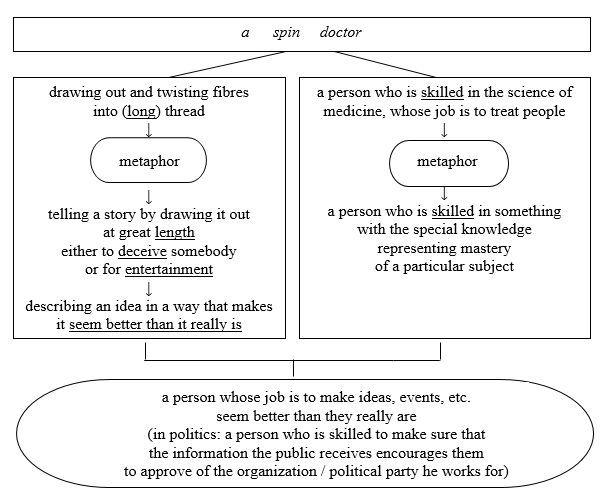
Figure 5 - Forming the semantics of the set phrase a spin doctor
4. Discussion
The undertaken study shows that phraseological meaning is made up on the principle of conceptual compositionality: certain concepts are identified in the semantic structures of constituent parts of potential phraseological units, which is then followed by their interaction and arrangement. Semantic change may touch upon different words in the process of forming a phraseological meaning. It has been found out that apart from the criterion of structural and semantic characteristics, phraseological units can be classified depending on what words undergo transference of meaning, which can be either metaphorical or metonymical.
Most often, semantic changes occur in words that do not denote professions. If this is the case, the resultant phraseological unit is likely to specify the properties of a person involved in the mentioned profession.
If the name of a profession is subject to metaphorical or metonymical shift in meaning, the formed set phrases denote something different from a person of a certain profession. It can even be an inanimate object associated with the corresponding professional activity by similarity or contiguity.
Cases where transference of meaning affect both professional and non-professional words are rare. They are characterized by a more complex pattern of the constituents’ interaction.
5. Conclusion
A phraseological unit is characterized by fully or partially transferred meaning. There are two types of such a transference: metaphorical and metonymical. That is why metaphor and metonymy are crucially important in the process of phraseological units’ formation. The study reveals the mechanism of concepts interaction in the semantic structure of the words constituting a phraseological unit. It is the principle of conceptual compositionality that helps to determine the role of metaphorical and metonymical transference in phraseological meaning formation.
Scientific investigation in the sphere of cognitive phraseology has proved to be fruitful. Hopefully, further research will lead to new discoveries.
